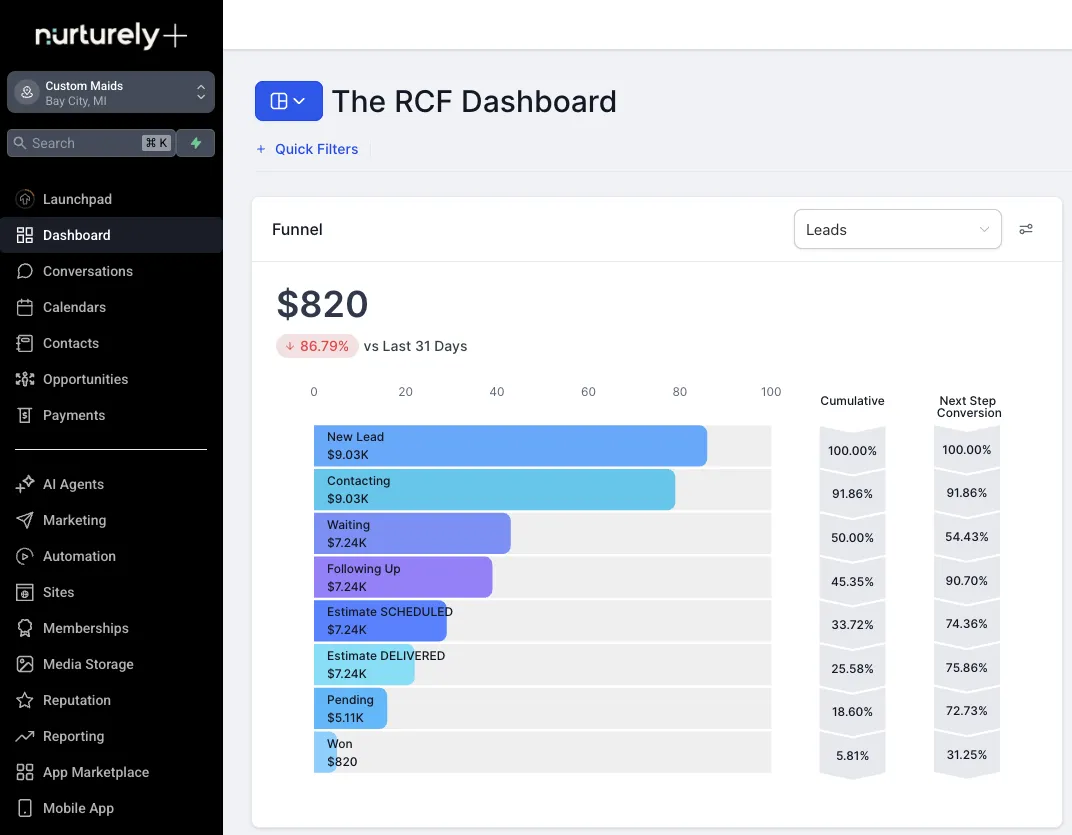Reputation Crisis Management Checklist™
Reputation Crisis Management Checklist™
How to Handle Negative Reviews, Protect Your Reputation, and Turn Critics into Advocates

Reputation Crisis Management Checklist™
Reputation Crisis Management Checklist™
Why Crisis Management Matters
A single negative review can ripple far beyond one customer — it can influence dozens of buying decisions, erode trust in your brand, and embolden competitors. But here’s the good news: HOW you respond matters more than the complaint itself.
Handled correctly, a bad review can:
Demonstrate your commitment to customers.
Build public trust in your transparency.
Win back a critic — and sometimes transform them into your strongest advocate.
Show prospects that you care and listen, even when things go wrong.
This playbook gives you a systematic response framework rooted in psychology, communication strategy, and reputation management best practices.
Step 1: Initial Assessment & Timing
✅ Wait 2–4 hours before responding
Allows emotional cooling for both you and the reviewer.
Ensures your reply feels thoughtful, not reactive.
✅ Document the complaint and emotional triggers
Separate factual issues from emotional pain points (e.g., “cold food” vs. “felt ignored by server”).
Emotional drivers often matter more than the incident itself.
✅ Review customer history & transaction details
Check receipts, service notes, staff interactions.
Look for patterns (first-time customer vs. loyal repeat client).
Pro Tip: If you feel defensive when you first read the review, you’re not ready to respond yet.
Step 2: Crafting the Response
Every effective response contains five building blocks:
Genuine acknowledgment
“Thank you for sharing your experience. I’m truly sorry we missed the mark.”
Address specific issues mentioned
Reference exact details to show you read carefully: “I understand your frustration about the long wait for service…”
Take responsibility without defensiveness
Accept accountability where appropriate.
Never shift blame to the customer.
Outline specific action steps
Immediate fixes: what has already been done.
Preventative measures: what will stop this from happening again.
Invite direct communication
Provide personal contact info or a clear next step.
Pro Tip: Write for the reviewer and the audience watching. Future customers will judge you based on tone, empathy, and professionalism.
Step 3: Recovery Action Plan
✅ Develop a personalized solution
Go above typical recovery expectations.
Example: don’t just refund — add a bonus credit, complimentary upgrade, or follow-up service.
✅ Assign a dedicated staff member
Prevents the customer from repeating their issue multiple times.
Shows accountability by giving them a personal point of contact.
✅ Document everything
Keep a timeline of all communications, offers, and actions.
Use CRM or internal notes so team members have visibility.
Case Snapshot: A hotel assigned a guest experience manager to every major complaint. Over 60% of critics updated their reviews to 4 or 5 stars after personalized recovery.
Step 4: Follow-Up Protocol
✅ Initiate direct contact within 24 hours
Reach out via phone, email, or DM.
Tone: calm, empathetic, and solution-focused.
✅ Schedule check-ins
Don’t stop at one fix. Circle back to confirm satisfaction.
Example: “Just checking to ensure your last visit was up to expectations.”
✅ Document improvements made
Share operational changes based on feedback: “We’ve added a second shift manager to prevent wait times like the one you experienced.”
Step 5: Long-Term Engagement
✅ Create a recovery offer that has weight
Examples: service voucher, membership upgrade, future discount, free consultation.
Value should feel meaningful without being a bribe.
✅ Implement systemic changes
Address root causes so similar complaints don’t repeat.
Show you’re serious about improvement.
✅ Monitor for updated reviews
Many customers will revise their review if they feel heard and respected.
Politely ask if they’d consider updating once the resolution is complete.
Step 6: Prevention Strategy
✅ Analyze patterns
Collect reviews by category (staff, speed, product quality).
Spot trends before they escalate.
✅ Update training protocols
Roleplay negative scenarios in staff meetings.
Teach empathy, active listening, and recovery language.
✅ Establish early warning systems
Post-service surveys (NPS, 1–10 satisfaction scores).
Social listening tools for online mentions.
“Red flag” alerts when repeat issues surface.
Pro Tip: Prevention is reputation insurance. Each avoided negative review is worth far more than even the best recovery.
Master Crisis Checklist
Wait 2–4 hours before responding.
Document complaint + emotional triggers.
Review customer history + transaction details.
Craft response with acknowledgment, specifics, responsibility, and action steps.
Assign a dedicated staff member for follow-up.
Document all communication + recovery actions.
Initiate direct contact within 24 hours.
Schedule check-ins until resolution is confirmed.
Offer meaningful recovery package.
Implement systemic changes based on patterns.
Train staff with updated protocols.
Monitor for updated reviews and ongoing sentiment.
Final Word
A negative review is not a death sentence. It’s a spotlight moment — a chance to prove your commitment, professionalism, and resilience.
When handled systematically, you don’t just protect your reputation — you strengthen it.
Prospects see you care.
Customers feel valued.
Critics often become your fiercest advocates.
Crisis management isn’t about damage control. It’s about building deeper trust — one difficult situation at a time.



